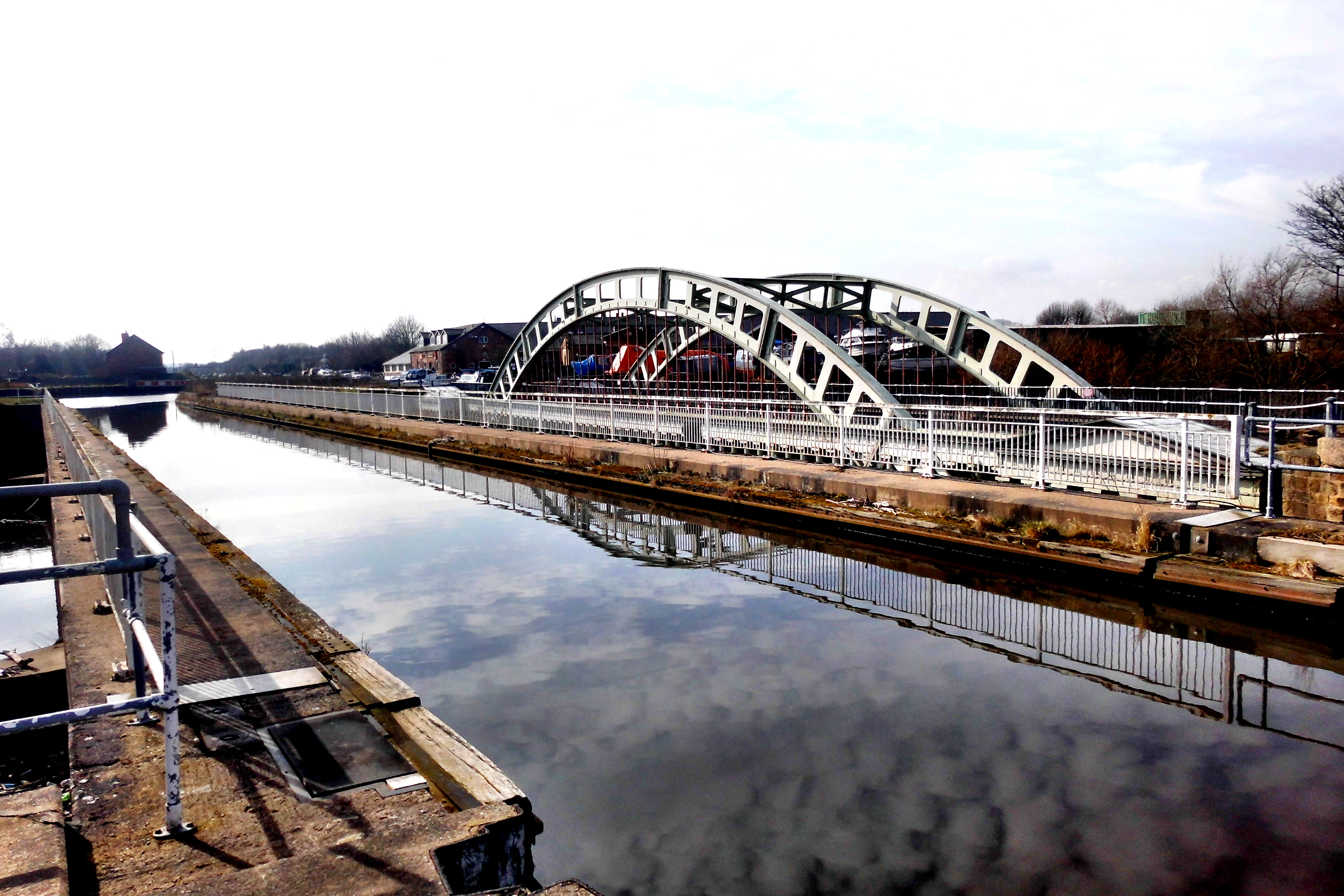Stanley Ferry on:
[Wikipedia]
[Google]
[Amazon]
Stanley Ferry Aqueduct was built between 1836 and 1839 to take the Aire and Calder Navigation over the River Calder in  The site is one of three historic fords crossing the River Calder near
The site is one of three historic fords crossing the River Calder near
West Yorkshire
West Yorkshire is a metropolitan and ceremonial county in the Yorkshire and Humber Region of England. It is an inland and upland county having eastward-draining valleys while taking in the moors of the Pennines. West Yorkshire came into exi ...
, England
England is a country that is part of the United Kingdom. It shares land borders with Wales to its west and Scotland to its north. The Irish Sea lies northwest and the Celtic Sea to the southwest. It is separated from continental Europe b ...
. It is one of the earliest through arch bridges in the world and is considered to be the longest span aqueduct executed in cast iron
Cast iron is a class of iron–carbon alloys with a carbon content more than 2%. Its usefulness derives from its relatively low melting temperature. The alloy constituents affect its color when fractured: white cast iron has carbide impuriti ...
.
Designed by George Leather Sr. and built by H. McIntosh, the aqueduct has a span of , a width of and a depth of . It is still in use today, though an additional wider concrete aqueduct was constructed alongside in 1981 and the bridge was then renovated.
Stanley Ferry is also the place where the Tom Pudding
Tom Pudding was the name given to the tub boats on the Aire and Calder Navigation, introduced in 1863 and used until 1985, which were a very efficient means of transferring and transporting coal from the open cast collieries of the South Yorkshir ...
tub boats were loaded with coal from local collieries between 1863 and 1985 and transported down to Goole in long trains by canal.
 The site is one of three historic fords crossing the River Calder near
The site is one of three historic fords crossing the River Calder near Wakefield
Wakefield is a cathedral city in West Yorkshire, England located on the River Calder. The city had a population of 99,251 in the 2011 census.https://www.nomisweb.co.uk/census/2011/ks101ew Census 2011 table KS101EW Usual resident population, ...
. Because the water was deepened for navigation a ferry became necessary, but was replaced by the first bridge in 1879.
Like many through arch bridges, the design of the bridge is often confused with the tied-arch bridge
A tied-arch bridge is an arch bridge in which the outward horizontal forces of the arch(es) caused by tension at the arch ends to a foundation are countered by equal tension of its own gravity plus any element of the total deck structure such grea ...
; many bridges have both characteristics. However in this case the bridge is of cast iron, which would be weak in tension. Although the aqueduct channel is in the right position to act in tying the arch, it would have no strength in this direction. At Stanley Ferry, the outward sideways thrust of the arch is retained by its abutment
An abutment is the substructure at the ends of a bridge span or dam supporting its superstructure. Single-span bridges have abutments at each end which provide vertical and lateral support for the span, as well as acting as retaining walls ...
s, as for the simple arch bridge
An arch bridge is a bridge with abutments at each end shaped as a curved arch. Arch bridges work by transferring the weight of the bridge and its loads partially into a horizontal thrust restrained by the abutments at either side. A viaduct ...
.
See also
* List of canal aqueducts in the United Kingdom *Grade I listed buildings in West Yorkshire
There are over 9,000 Grade I listed buildings in England. This page is a list of these buildings in the county of West Yorkshire, by metropolitan district.
Bradford
Calderdale
Kirklees
...
*Listed buildings in Normanton, West Yorkshire
Normanton is a civil parish in the metropolitan borough of the City of Wakefield, West Yorkshire, England. The parish contains 13 listed buildings that are recorded in the National Heritage List for England. Of these, one is listed at Grade& ...
References
Through arch bridges in the United Kingdom Cast-iron arch bridges in England Bridges completed in 1839 Buildings and structures in Wakefield Transport in West Yorkshire Navigable aqueducts in England Grade I listed buildings in West Yorkshire Grade I listed bridges Grade I listed canals Normanton, West Yorkshire {{UK-bridge-struct-stub